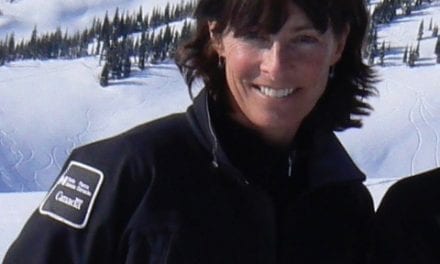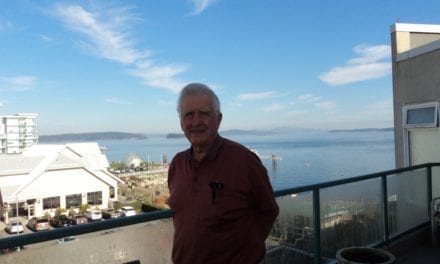12. Can you tell me about any rescue/wildlife stories that stick out in your memory?
To monitor wolf movements in the late 1990’s our objective was to have at least two members of each Banff National Park wolf-pack collared. On a week of good weather after a dump of fresh snow, Lance Cooper flew Dave Norcross and I up the Cascade Valley with our telemetry receiver. We found the pack with the help of the “Judas” wolf—a pack member that had already been fitted with a radio collar, and landed some distance away to prepare to dart another pack member with immobilizing drug. We hazed and separated a wolf out of the pack, worked it up into a draw, and darted it. It went down quickly. The nearest spot to land was back down in the valley bottom. It would be long and time-consuming hike back up to handle the animal in the deep snow which wasn’t ideal. Unknown to me, Dave had a plan. We landed and hooked up the sling rescue gear complete with the harness that the Parks rescue dog rode in. Hanging underneath the helicopter Dave slung into the to the draw, put the wolf into the dog-harness, and slung back down to the valley bottom harnessed to the sleeping wolf. We took our measurements and samples, fit the collar and released the wolf. When we got back to the office, Tim Auger called us into his office reminded us that the rescue-harness system was reserved for public safety emergencies and that he might lose government approvals if we started to use it for wolf capture. So that was probably the first and last time sling rescue gear will ever be used for wolf capture. It was effective though. I often wondered what the rescue dog thought about the smell of the wolf the next time he wore his harness.
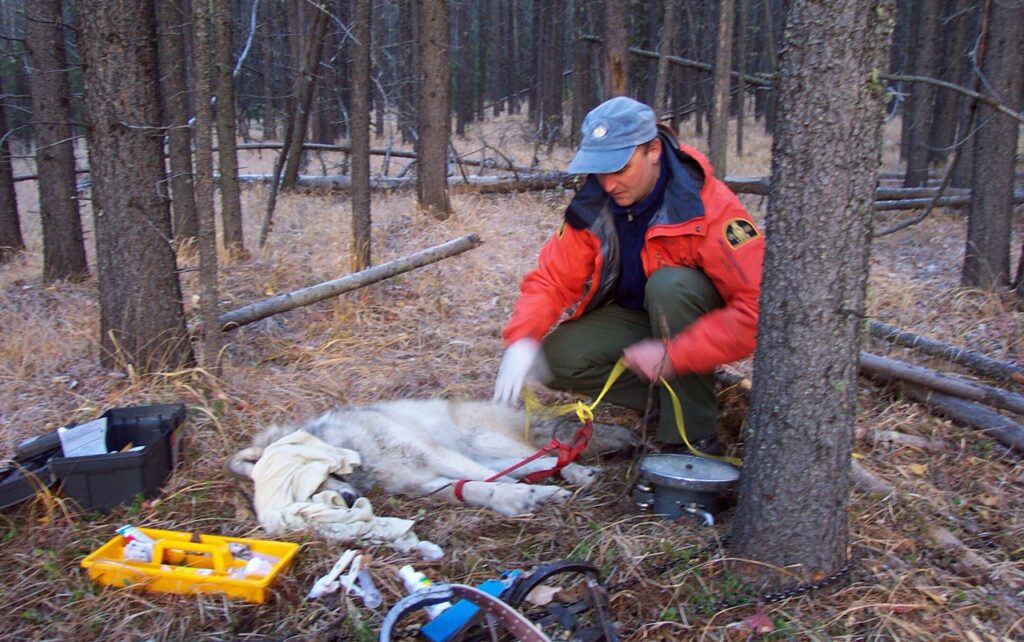
Tom with wolf Isabel 2001
As the result of a cougar attack and fatality near Banff, I was tasked with developing a study to better understand cougar movements and ecology in the Bow Valley. Andrea Kortello, the graduate student involved, conducted and published some excellent research as a result. By 2002, we were well into the study and we needed to re-collar “Doug”, one of the dominant tom-cats in the valley. Andrea’s team cut his fresh tracks in the snow and we had Flint Simpson, with his cougar hounds, join us to chase, tree, and capture Doug. It as really cold, and we got spread out over the chase. It became apparent that after darting Doug and having him fall asleep on a high branch, that our guy carrying the lowering ropes was a little ways back and still catching up. With a fair amount of time passing, the cat was starting to rouse. Simon Ham (now with Res Con in Banff) and I planned to top-up the cat with more immobilizing drug to give us time to rig the lowering system. The syringe froze as fast as we filled it, so after we thawed it in a thermos of tea, Simon climbed up my back and stood on my shoulders. He jabbed the cat but lost his footing when the cat stirred and fell on top of me. Simon was OK and the syringe was empty, but the needle was bent. I asked him whether he injected the cat or me. He said he thought he got the cat. I asked to keep an eye on me just in case. The cat went into a deeper sleep and I felt fine, so we lowered and re-collared Doug and he went on to give us many more years of insight into cougar movements and behavior.
Working near the headwaters of an isolated river like the Nahanni, I expected to generally encounter seasoned wilderness travelers, but I found that wasn’t the case on a few occasions. One time that stood out was as a Seasonal Warden in Nahanni working 3-week shifts at Rabbitkettle Warden Station, I had a knock on my door in the wee hours one morning at about 2am. Four soaking wet dudes, three carrying rifles, and one bloodied with a bunch of cuts and scrapes across his face and arms, were standing on the porch. On fairly high alert, I asked them what was going on. It turned out that they were all from downtown Boston and were in Nahanni at the urging of a grandfather of one of them, who had recounted fond memories of hunting and gold panning his way along the Nahanni River decades earlier. After driving from Boston, they had chartered a flight into the upper river, which at that time was above the park, and started their hike down, shooting and eating whatever they could get. They found out early on that hiking along the riverbank was impossible, so they built a sketchy log raft held together with quarter inch nylon line. They didn’t make it far before they ran into a big rock and were shipwrecked. They became separated in the chaos and swam to opposite banks of the river. Two had tried to swim across to join the others but didn’t make it far in the glacier fed water before they had to turn around. Two of the brighter guys collected enough rope, logs, and remains from the broken-up raft to make another one. They floated across and rejoined the others and continued downriver and crossed into the park. They had tried to make it by Rabbitkettle undetected that night but got caught by a sweeper just inside the park. Everyone bailed out and swam ashore, but one of them jumped on top of their remaining gear to try to save it but got jammed underneath the sweeper and injured. He salvaged one of their back packs for his efforts. It contained a jar of spare ammunition, some soggy potato chips, and a bit of clothing.
At daybreak, working with Park Headquarters by radio we arranged to fly them back to their parked car near Fort Nelson. They put up their rifles and ammunition as collateral for the flight and promised the pilot cash payment after they got to town. The pilot never saw them again and later found that the rifles were pretty much worthless. Later that morning I motored upriver 15 miles to investigate a column of smoke that I saw rising from where the Broken Skull River joined the Nahanni. I discovered that one of their campfires had gotten away had started a sizeable wildfire. I also found the remains of some hares and squirrels that they had eaten. I notified the NWT forest service about the fire and they tried, unsuccessfully, to track them down and charge them. The boys from Boston left quite a bit of debt and destruction in their wake.
13. How did the Warden service change over the years? – hired during centralization, affirmative action, focus on public safety, changes in the 1990/2000’s, ecological integrity, etc.?
The most significant change I thought was the emphasis on ecological integrity, and how over time the focus shifted from basic protection to ecological restoration.
Other changes, like the dismantling of the Service and subsequent reorganization tended to take away the great efficiency of the specialist/generalist organization that we were and tended to put res con staff into silos with little crossover. We lost a good portion of our ability to man-up when the situation warranted for fire and rescue situations for example.
14. What about the Warden Service was important to you? – idea of protecting and preserving national parks, keeping people safe, etc.?
The idea that we were charged with maintaining a representative landscape with all the parts and processes into the future. It was heady stuff. It was, and still is, a work in progress.
15. Are there any legends or stories associated with the Warden Service that you can share? Is there anyone from the Service that stand out in your mind?
Cliff White had a knack for wrestling ecological integrity issues to the ground and making difficult ecological restoration programs happen. He led many initiatives both nationally and in Banff National Park including prescribed fire, wildlife corridor establishment, and laid the groundwork for bison restoration to name a few. I had the good fortune of riding his shirttails, and hanging on for the roller coaster, during the middle 20 years of my career. During this period, Dave Dalman in his role as Ecosystem Secretariat Manager, aside from his bad jokes, brought ecological integrity issues to the attention of those who needed to hear it, and Ian Pengelly applied his brand of cold-logic to large scale fire and vegetation management. I wouldn’t have missed the camaraderie, dedication, and rapid pace of these years. We got busy, sometimes too busy, and we landed some big successes. Bob Haney, the Chief Park Warden for many of those years, wasn’t always so sure about everything that was going on, but I think he had faith that we were generally aimed in the right direction and was really supportive.
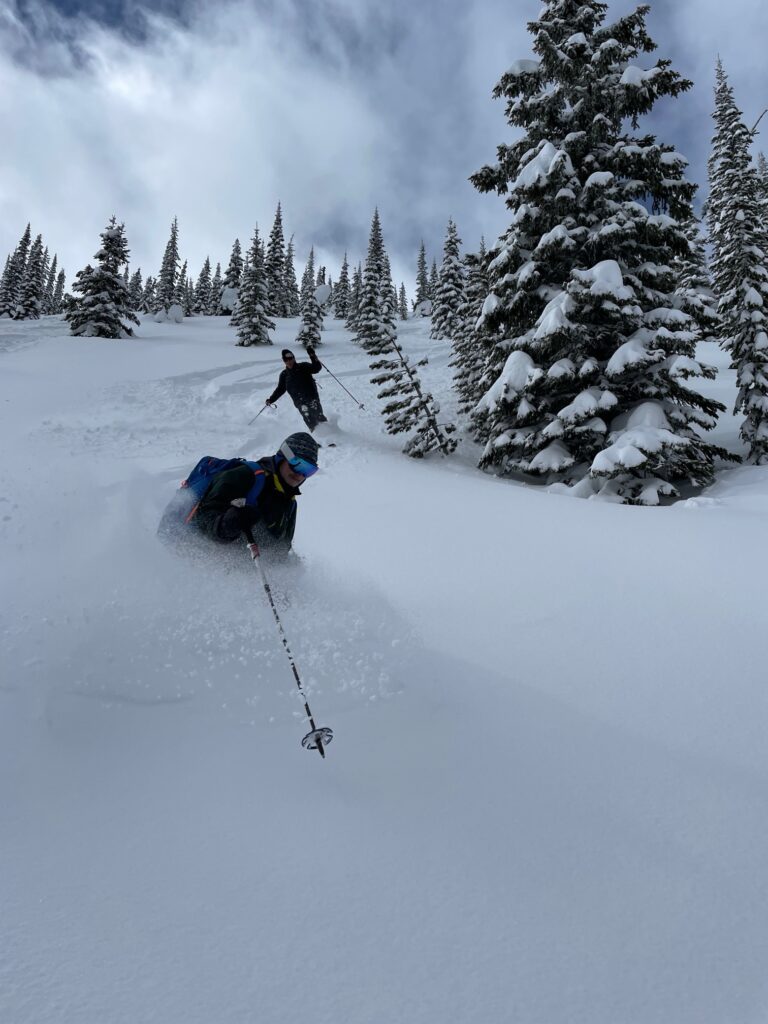
Tom Hurd and Cliff White – Nakusp
16. Is there anything about the Warden Service as you knew it that you would want future generations of Wardens to know?
Learn your backcountry travel skills. Make the most of opportunities to broaden your horizons. Be professional in your area, upgrade your academics if/when you have the chance and the inclination. Keep your ear to the ground and pick the important hills—not every hill— to spend your reputation “capital” on.
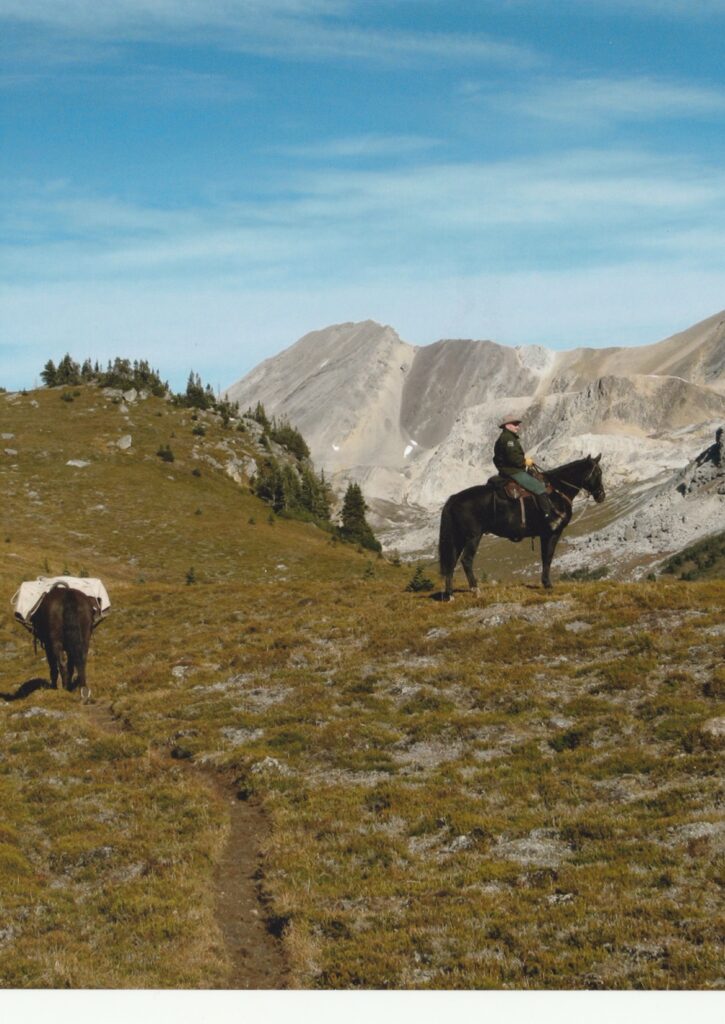
Tom at Pipestone Pass

